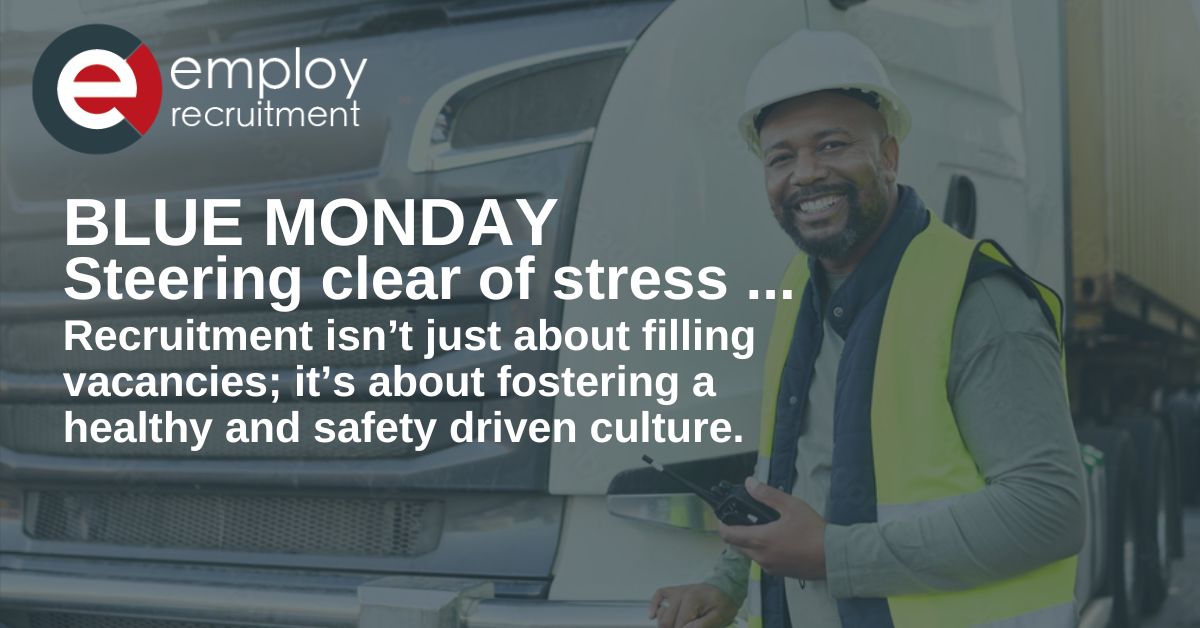Steering Clear of Stress: How to Champion Driver Wellbeing
Blue Monday, often dubbed the most depressing day of the year, can act as a poignant reminder of the challenges many face in their daily lives. For professional drivers, this day shines a spotlight on the unique stresses of their work, long hours, isolation, and the pressures of the road. For employers recruiting drivers, it’s crucial to acknowledge these factors and prioritise wellbeing as part of a supportive workplace culture.
The Unique Challenges of Driving for Work
Professional driving is often romanticised as a free-spirited job, yet the reality can be far more challenging. Here are some of the key stressors that drivers face:
1. Long and Irregular Hours
Drivers frequently work long shifts, often starting early or finishing late. These unpredictable hours can lead to fatigue, disrupt sleep patterns, and strain personal relationships. Over time, the physical and mental toll of such a demanding schedule can accumulate, leading to burnout.
2. Loneliness and Isolation
Many drivers spend long stretches of time on the road alone. While some may relish the solitude, others find it isolating, especially when they are away from family and friends for extended periods. This isolation can exacerbate feelings of disconnection and negatively impact mental health.
3. Stressful Working Conditions
Driving under pressure, whether due to tight delivery deadlines, traffic congestion, or adverse weather conditions can elevate stress levels. Additionally, the need to constantly stay vigilant to ensure safety adds another layer of mental strain.
Prioritising Driver Wellbeing in Recruitment
Employers have a significant role to play in creating a healthier, more supportive environment for drivers. Here are some key strategies to incorporate during recruitment and beyond:
1. Promote Work-Life Balance
Offering flexible schedules or rotating shifts can help drivers maintain a better work-life balance. Clear communication about working hours and expectations during the recruitment process sets the foundation for trust and transparency.
2. Provide Mental Health Support
Encouraging open conversations about mental health and offering access to counselling or employee assistance programmes can make a huge difference. Drivers should feel they have someone to turn to if they’re struggling.
3. Foster a Sense of Community
Creating opportunities for drivers to connect with colleagues such as regular check-ins, team events, or virtual groups can combat loneliness. Building a sense of camaraderie helps individuals feel valued and supported.
4. Implement Wellbeing Initiative
Practical wellbeing measures that focus on health, diet, and exercise can significantly enhance the quality of life for drivers. Providing resources such as nutritional guidance to support healthy eating on the road, offering access to fitness programmes or exercise tips, and organising regular health checks demonstrate a commitment to employee welfare. Encouraging breaks that include physical activity, such as stretching or short walks, can also help drivers maintain their physical and mental health. These initiatives can be highlighted during recruitment to attract candidates who value a supportive and health-conscious employer.
Recruitment isn’t just about filling vacancies; it’s about fostering long-term, mutually beneficial relationships. Acknowledging the challenges drivers face and offering solutions to support their wellbeing not only helps combat the struggles of days like Blue Monday but also leads to higher retention, better performance, and a happier workforce.
As we move forward, let Blue Monday serve as a reminder of the importance of driver wellbeing. By addressing stressors like long hours, isolation, and workplace pressures, employers can create an environment where drivers feel supported and valued every day of the year.


